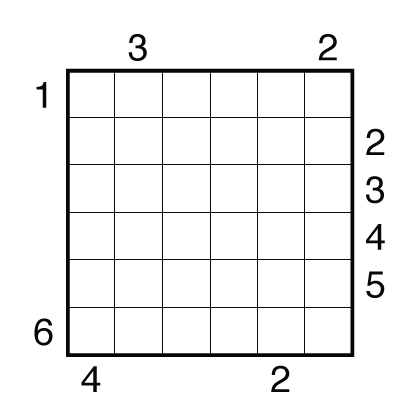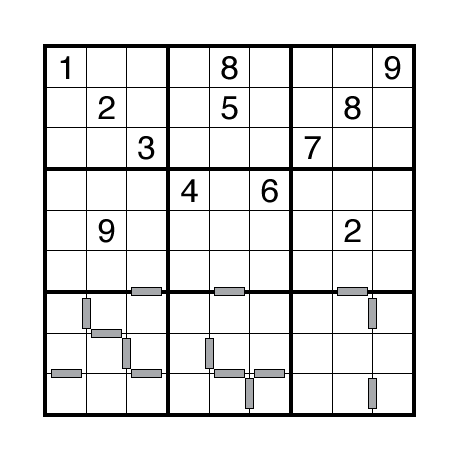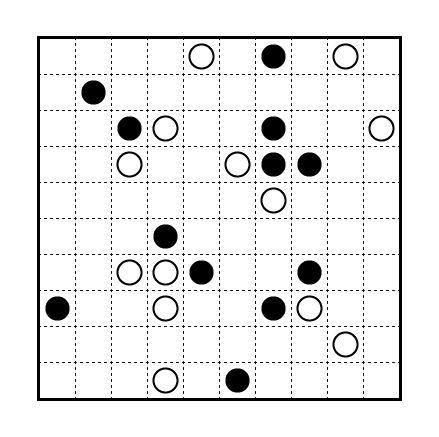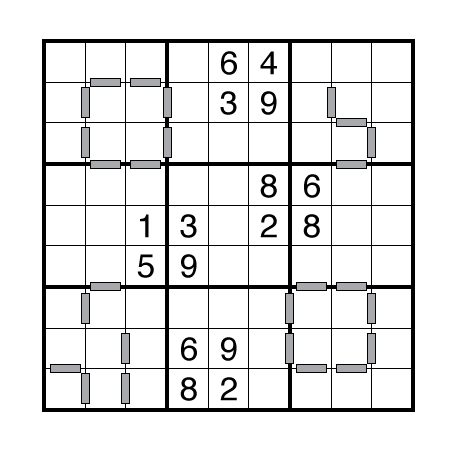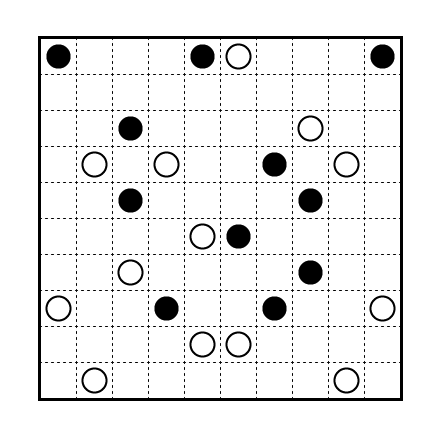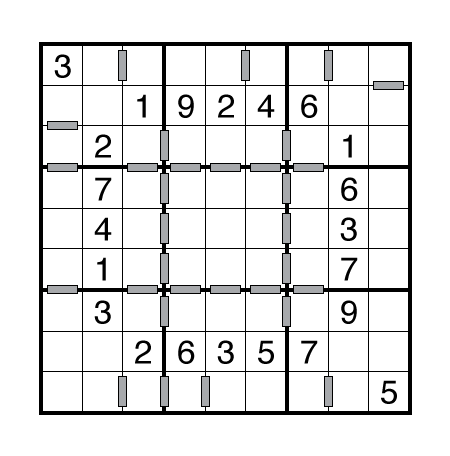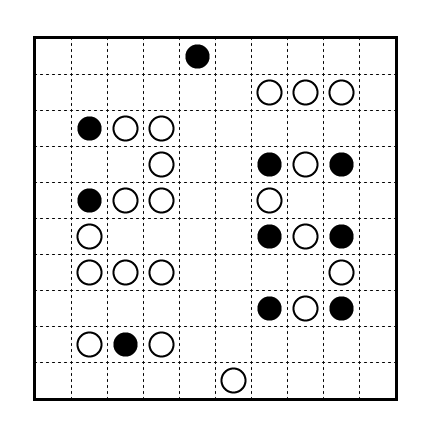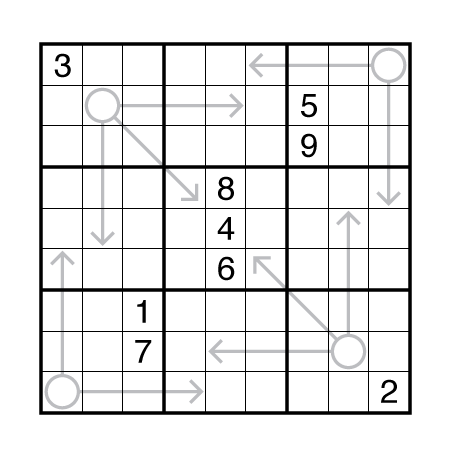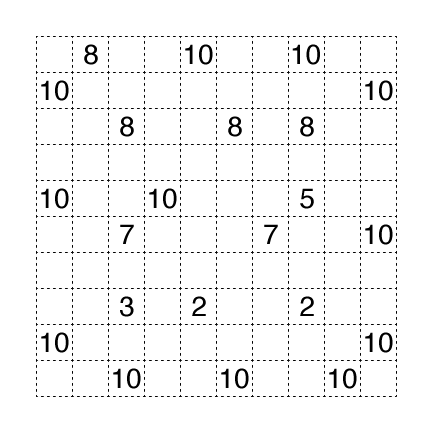Outside Sudoku by Thomas Snyder
[This is a repost from our archives with new notes at the top (original post here): While Outside Sudoku is a simple concept to understand (all the outside digits work like placement notes for the first three cells in that direction), making thematically interesting puzzles is more challenging. This puzzle started by placing the four big 1-9 nonets outside the grid and then finding an interesting set of deductions on the other edges of the grid to get to one solution.]
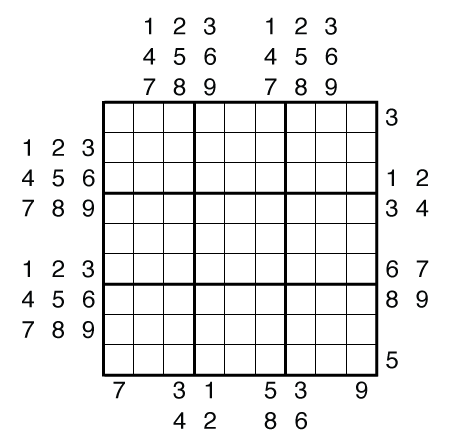
or solve online (using our beta test of Penpa-Edit tools; use tab to alternate between Sudoku entry modes and a shading mode to mark off clues.)
Theme: Four Nonets
Rules: Standard Outside Sudoku rules.
Estimated Difficulty*: 2 stars
Time Standards (highlight to view): Grandmaster = 2:15, Master = 3:30, Expert = 7:00
Solution: PDF
Note: Follow this link for more Outside Sudoku puzzles. More Outside Sudoku puzzles can be found in Masterpiece Sudoku Mix 4.

